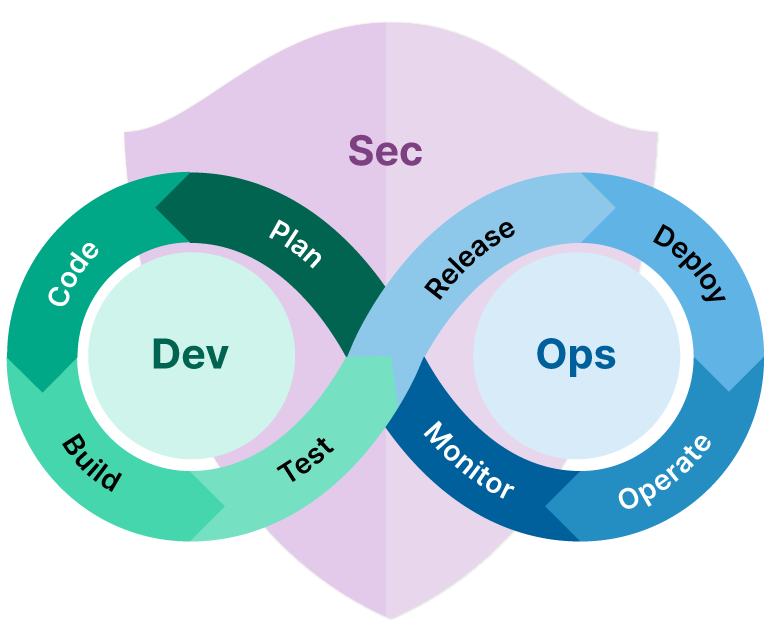It happens more often than you think: A development team ships a feature on Friday, and by Monday, phones are buzzing with breach alerts while competitors’ stocks are climbing. It might sound dramatic, but it’s real.
Companies that treat security as a post-deployment checkpoint are essentially gambling $4.88 million that they can’t afford to lose. That was the average cost of a data breach in 2024, and with the number of exploited vulnerabilities jumping 96% year over year, there’s zero margin for error.
What separates the companies writing the checks from those cashing them is whether they treat security like a priority or an expensive afterthought, playing a $5 million game of maybe it won’t happen to us. Smart executives get that building security into development isn’t just damage control — it’s what keeps you a step ahead. With over 52,000 new vulnerabilities discovered in just the first eight months of 2024, waiting until deployment to worry about security is like waiting to eat ice cream until long after it’s melted: technically an option, but it may lead to food poisoning / hefty financial consequences.
DevSecOps isn’t a trend. It’s the difference between sleeping soundly and waking up to notifications about a data breach. Want to ship code fast and keep hackers out? You need a DevSecOps implementation that actually delivers. Let’s dive into what works and what’s yesterday’s news.

What is DevSecOps? (And why should you care?)
DevSecOps stands for development, security, and operations — a philosophy that bakes security into every step of the software development lifecycle. The goal is to deliver software that’s not only fast and reliable but also secure from day one. DevSecOps means that everyone — development, security, and IT operations teams — shares responsibility for keeping your apps safe, using automation, collaborating, and providing continual feedback to catch threats before they become headlines.
The math is simple. Fixing a security flaw in production costs 100 times more than catching it during development. Add regulatory penalties, incident response, and reputational damage, and you’re looking at operational expenses that make your CFO question every technology investment. But the real problem isn’t speed; it’s fragmentation. Security reviews happen in isolation, creating knowledge silos that slow everything down. By the time security findings reach developers, context is lost, and remediation relies on expensive guesswork.
DevOps vs DevSecOps: The showdown
So, what’s the difference between DevOps services and DevSecOps? In practice, DevOps pushes software quickly and smoothly from development to production — like helping a Formula 1 car hit top speed. DevSecOps makes sure security is built in — like implementing airbags, seatbelts, and collision alerts.
| Aspect | DevOps | DevSecOps |
|---|---|---|
| Focus | Speed, automation, collaboration | Security, speed, automation, collaboration |
| Security integration | Often late in the process | Early and continuous (shift left) |
| Team involvement | Dev + Ops | Dev + Sec + Ops (everyone is involved) |
| Tools | CI/CD, monitoring, IaC | Security scanners, SIEM, compliance tools |
Why implementing DevSecOps is the only rational approach to business challenges
A traditional approach to security is like waiting to call the mechanic until after your car breaks down: it delays your trip (aka your release) and leads to weekend emergencies. Every breakdown costs your business time and money, while competitors stay on the road. DevSecOps inverts this equation. Building cyber into the development process from the start can be your solution for shipping faster, avoiding failures, and actually earning customer trust instead of just promising trustworthiness in your marketing copy.
Detect security issues before they cost millions
Security vulnerabilities discovered during development often cost thousands of dollars to fix. The same issues found in production cost millions. DevSecOps integration adds security scanning directly into your development pipeline, helping you catch problems when they’re cheaper to address.
Running static code analysis and vulnerability scanning automatically with every code commit minimizes the traditional bottleneck of security reviews blocking releases. With DevSecOps, development teams maintain their velocity while security validation happens continuously in the background.
Capital One reduced their average time to fix critical vulnerabilities from 18 hours to just minutes by embedding automated security checks throughout their development process.
Respond to threats in real time with full context
Modern security monitoring provides immediate threat detection with complete deployment context. When anomalies occur, teams know exactly which code change or configuration triggered the alert. As a result, investigations start with precise information rather than forensic detective work. Response times drop from hours to minutes because the system provides specific context about what changed and when. This targeted approach reduces both the impact of security incidents and the operational overhead of investigations.
Netflix incorporates security into every stage of development with automated vulnerability scanning and continuous monitoring built directly into their CI/CD pipelines, enabling real-time detection and swift responses to threats.
Minimize audit burden with automated compliance
Regulatory requirements like the GDPR, HIPAA, SOX, and PCI DSS traditionally required extensive manual audit preparation. DevSecOps transforms compliance into automated processes that run continuously across all systems. Policy enforcement happens automatically in every environment, from development through production. Every code commit and infrastructure update generates compliance documentation automatically. This means that when auditors arrive, teams can present real-time dashboards instead of scrambling to gather evidence. In short, DevSecOps reduces audit preparation times from months to days while strengthening regulating compliance.
The UK Department of Work and Pensions (DWP) adopted DevSecOps to align security with policy and legislation while enabling innovation, transforming compliance into continuous automated processes, and supporting secure digital service delivery at scale.
Make every team think and act like a security expert
Rather than hiring expensive security specialists for every team, DevSecOps distributes security expertise through tools and automation. Developers receive immediate feedback on security issues, with specific guidance built into their development environments. IDE plugins identify vulnerable dependencies before code enters repositories, while automated systems teach security practices during development. As a result, your existing team members become more productive and valuable, and your security posture improves without proportional headcount increases.
Etsy built security into their culture, making it a shared responsibility across development teams through training and resources that help developers proactively identify and fix security issues.
Predict operations through continuous validation
Traditional security creates deployment uncertainty: more applications call for more security resources. Teams never know if security reviews will discover issues that delay releases. DevSecOps creates solutions for exponential scaling through automation and policy as code. Security becomes a known quantity in project planning because developers get consistent security guidance regardless of project complexity. Meanwhile, operations teams deploy with confidence because security validation is architected into the deployment pipeline, not bolted on afterward. The result is predictable growth strategies and reliable customer commitments.
Allianz, a global insurance and asset manager, boosted operational predictability by shifting security left and using continuous validation. This led to faster and safer releases, a 20% sales increase in the first week, and quicker vulnerability fixes.
Build customer trust through transparent security
Enterprise customers and regulatory bodies don’t want security promises; they want evidence. DevSecOps provides regular security metrics and real-time compliance reporting that demonstrate the actual security posture rather than theoretical controls, and this transparency can become a decisive differentiator. When evaluating vendors, clients favor companies that provide real-time security dashboards and automated audit trails. Security transforms from a cost center into a tool that closes deals and maintains long-term client relationships.
HSBC, a global banking and financial services company, built security into their agile cloud transformation, cutting unplanned security work and speeding up delivery. Transparent metrics helped security teams improve efficiency and avoid costly delays.
How to implement DevSecOps that actually delivers: 10 key steps
Evaluate your security reality
Start with a brutal reality check. Audit your current security tools, processes, and team skills. Don’t just assume you know where the gaps are — actually map them out. Use automated vulnerability scanners such as Nessus or Rapid7 to get the real picture, and match your workflows against compliance requirements. This isn’t about pointing fingers; it’s about knowing exactly where you stand before you start fixing things.
Automate security at scale
Manual security checks died the day continuous deployment was born. You can’t hire your way out of this problem: you need to automate your way through it. Integrate automated code scanning, vulnerability testing, and compliance checks directly into your CI/CD pipeline. Tools like Snyk, Fortify, and Burp Suite catch issues before they hit production, saving you from those 3 a.m. incident calls.
Break down cultural silos
Get your development, risk management, and ops teams talking to each other regularly. Make security everyone’s responsibility, not just a particular team’s problem. Embed security champions in every development team who can spot risks early and advocate for secure practices. When overall protection becomes part of the conversation from day one, it stops being the thing that slows everything down.
Set up continuous monitoring and incident response
Set up real-time monitoring for threats and anomalies using tools like Splunk or Datadog. More importantly, have a clear incident response plan that everyone knows and can execute quickly. When something goes wrong — and it will — you need to react fast. Practice your incident response procedures regularly so muscle memory kicks in during actual emergencies.
Align security goals with business plans
Define clear, measurable security goals that directly support your business outcomes. Track metrics that matter: mean time to detection, remediation velocity, and deployment frequency with security validation. These numbers tie directly to business value and give you the ROI justification you need for continued investment. Also, make sure everyone understands what secure enough means for your specific organization.
Secure your infrastructure as code
Manage your infrastructure with code using Terraform, CloudFormation, or similar tools, and scan configurations for security issues before deployment. Infrastructure as code (IaC) makes your environments consistent and repeatable, but config files need to be locked down tight. Treat infrastructure code with the same security rigor as application code — because that’s exactly what it is.
Integrate security throughout the SDLC
Embed security checks at every stage of your software development lifecycle, from initial design through deployment and maintenance. Use static analysis during development and dynamic analysis during testing to catch vulnerabilities early when they’re cheap to fix. Security can’t be a gate at the end; it needs to be guardrails throughout the entire journey.
Review and improve non-stop
Security isn’t a set-it-and-forget-it operation. Review your processes, tools, and incidents regularly. Update your playbooks based on what you learn from each incident, and retrain your teams as threats evolve. The cost and effort associated with late-stage remediation makes early detection and continuous improvement essential for maintaining both security and velocity.
Invest in security training that sticks
Provide ongoing security training for your entire team, not just annual compliance theater. Identify security champions, run realistic simulated attacks, and keep your team current with the latest threat patterns. The best security tools in the world won’t help if people don’t know how to use them effectively.
Keep your finger on the pulse of the latest security developments
Watch the trends, follow industry news, and keep updating your tools and processes. The use of AI in cyber attacks is one of the most critical developments for 2025, with multimodal AI being used to automate entire attack chains. Meanwhile, the intensifying threat of steal now, decrypt later attacks will force organizations to speed up the adoption of post-quantum cryptography. The threat landscape is moving fast, and your defenses need to move faster.
The bottom line for executive leadership
DevSecOps stopped being just a tech initiative a long time ago. These days, it’s part of how businesses protect their continuity and resilience. Companies that build security into their development process avoid costly breaches, ship more reliable software, and stay ahead while others are still scrambling to patch vulnerabilities. According to IBM, organizations with high DevSecOps adoption saved $1.68 million on average.
The real question isn’t whether you need DevSecOps; it’s whether you can afford to go without it, especially as continuous deployment and cloud-native systems become the standard. At your next board meeting, you’ll either be talking about what DevSecOps got right or how much the last security incident cost you. Not sure where to start? Contact Intellias and let’s talk DevSecOps that actually delivers.


